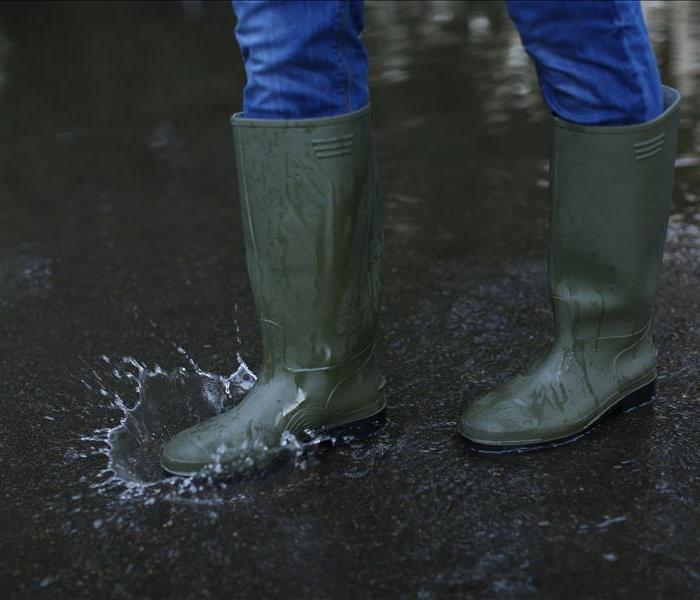Flood Safety and Preparedness
10/1/2014 (Permalink)
Flash flooding is a possibility in all 50 states, although people living in flood plains and by rivers or shoreline are uniquely vulnerable to regular flooding. While you may have time to prepare for flooding that builds slowly – such as a river overflowing its banks – flash floods can occur very quickly, and every year, flash flooding is responsible for more deaths than tornadoes, hurricanes or lightning. Here’s what to do before, during and after a flood.
Know emergency flood terms
- Flood watch: Flooding is possible.
- Flash flood watch: Flash flooding is possible.
- Flood warning: Flooding is happening now, or will soon.
Flash flood warning: A flash flood is occurring; seek higher ground (on foot) Making a plan
- An emergency kit is something everyone should have on hand, no matter your locale or the natural disasters your area is vulnerable to. The Federal Emergency Management Agency's Ready.gov can help you build one — with food, water, and essential supplies for 72 hours — fairly easily, as well as teach you where to store it and how to update it. If the idea of making your own kit is too daunting, you can buy an emergency preparedness kit put together by the American Red Cross.
- Plan an evacuation route with your family, and perform regular drills.
- Buy and install sump pumps with back-up power.
- Raise electrical switches, sockets, circuit breakers and wiring at least 12 inches above the highest projected flood elevation for your house.
- Install backflow valves or plugs in drains, toilets and other sewer connections, to keep floodwaters from entering.
- Fuel tanks, if torn free by flood water, can leak contaminants or cause other damage if swept downstream. Make sure fuel tanks are anchored.
If there’s a flood or flash flood watch
- Gather emergency supplies and tune into local media or the NOAA Weather Radio for updates.
- Review emergency plans with the household.
- Fill car with gas and place emergency kit inside car, or make arrangements with others for a ride
- Sanitize sinks and tubs, then fill with clean water. Fill plastic soda bottles and other containers with clean water.
- Bring lawn furniture, trash cans, grills and play equipment inside, or tie down outside.
- Gather medical records, identification cards, insurance cards and other documents, and place inside a waterproof container for transport during evacuation.
- Take livestock and family pets to a safe area (emergency shelters do not accept animals).
- Adjust refrigerator and freezer to the coldest possible temperature in case you lose power for an extended period.
If evacuation is ordered
- Never ignore an evacuation order.
- Take only essentials.
- Turn off utilities at the main power switch, and shut off the gas. Turn off electrical appliances.
- Don’t try to walk through flowing water, as even 6 inches of moving water can knock you down and drowning is the number-one cause of flood deaths.
Driving in a flood
- Don’t drive through a flooded area. You won’t always be able to tell how deep water is. Six inches of water is enough to cause stalling or loss of control. Many vehicles will float in just one foot of water, and two feet of water is enough to carry most vehicles away.
- Don’t drive around a barricade.
- Stick to evacuation routes, and don’t take short cuts.
- If you’re driving at night, be especially cautious.
Weather the storm
- If you aren’t ordered to evacuate, stay tuned to local media for weather updates.
- Even if you are instructed to stay at home, be prepared to evacuate if your house is damaged, of if you receive orders to do so.
When you return home
- Turn off your electricity when you return home.
- Watch for animals and snakes that have been washed out during the flood.
- Look for hazards before you step – flood debris can be dangerous.
- Check for gas leaks before lighting candles or using any open flame.
- Clean everything – including yourself – that has gotten wet. You don’t know what chemicals and other hazards are in the flood water.
- If your power has gone out, never use a generator indoors, because deadly levels of carbon monoxide can build up quickly in small spaces and remain dangerous for hours.




 24/7 Emergency Service
24/7 Emergency Service
